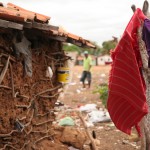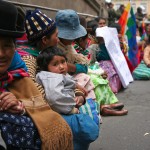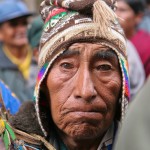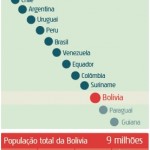japanese atrocities in singapore25 december 2020 islamic date
This article has two broad objectives. Singapore was forced to use the Japanese language, with schools only allowed to only teach in Japanese and hand out Japanese textbooks. Regarded as a god to save and contributed to grant privileges to help the local population of cruelty Kempeitai, other military organizations. When Japanese soldiers and officials were tried and executed for war crimes just after World War II, the court found that at least 200,000 had perished during the Rape of Nanking. [1] Height was not a criteria in pi. Read more at straitstimes.com. Lieutenant Nakamura, his head covered with a white hood, is led to the scaffold where he will be hung after being found guilty of beheading an Indian soldier with his sword on the Pulau Islands, 14 March 1946. One month later, in March 1942, the Japanese government adopted an educational policy as part of the "Principles for the Gunsei Disposition of the Occupied Area". Meanwhile, even though comfort women was an issue in Singapore, the government decided to move on about it. So many years later, it is difficult to conceive of just how devastating the fall of Singapore was. Mention World War 2 to Singaporeans and thoughts of the Japanese Occupation and its associated atrocities, suffering, and death come to mind. The former Japanese premier was chief of the . They introduced the system of "Sook Ching", which means "purge through purification" (in Chinese), to get rid of those deemed as anti-Japanese.The Sook Ching Massacre claimed the lives of between 25,000 and 50,000 ethnic Chinese in Singapore and Malaya. Kusunose after his preliminary interrogation by 2 Aust War Crimes Section in Tokyo on 5 th and 6th December 1945 fled to Takigahara and committed suicide there on December 17th.3 FIRST WEBB INQUIRY Following the Japanese landings in New Britain and New Guinea in 1942, evidence accumulated of the commission of atrocities. In the Japanese equivalent of the Nurnberg Trials, held in Tokyo in 1946, many of the high-ranking officers and government officials were found guilty of genocide and war crimes and executed. Indicted Japanese war criminals standing to attention in the dock of the Singapore Supreme Court at the beginning of the trial. I limit the discussion to internal factors of Japanese military and society. Crimes of the Imperial Japanese Army and Navy, 1937-1945 . At the War Crimes Trial in Tokyo, document No 2726 consisted of 14,618 pages of sworn affidavits, each describing separate atrocities committed by the invading Japanese troops. War crimes were committed by the Empire of Japan in many Asian-Pacific countries during the period of Japanese imperialism, primarily during the Second Sino-Japanese and Pacific Wars.These incidents have been described as an "Asian Holocaust". The Rape of Nanking and the evil human experiments done by Unit 731 usually come to mind when we think of Japanese war crimes. War is hell. surrendered Singapore to the Japanese commander, Tomoyuki Yamashita, on February 15, 1942.4 The fact that Singapore, considered impregnable and an essential base in the Pacific, had fallen so easily to the 2 A brief discussion of this theme can be found in Neil J. Kritz, "War Crimes on Trial," in War Crimes, ed. The fuel oil was available in islands adjacent to Singapore. Japanese war crimes took place in Korea, China, Malaysia, Indonesia (previously known as the Dutch East Indies), the Philippines, Singapore and other countries in Asia in times of the Second World War. Reasons of space permit only a small selection of the atrocities mentioned in the previous section to receive more detailed examination here, but a comprehensive treatment of Japanese atrocities can be found in the books and web-sites listed at the end of this chapter. Tojo was arrested, sentenced to death for Japanese war crimes by the International Military Tribunal for the Far East, and hanged on December 23, 1948. The Japanese Army during World War II committed many crimes against humanity that were ordered by the government and high command. At Alexandra Hospital in Singapore, over 300 doctors, nurses, and patients were bayoneted to death. Leonard George (Len) Siffleet (14 January 1916 - 24 October 1943) was an Australian commando of World War II.Born in Gunnedah, New South Wales, he joined the Second Australian Imperial Force in 1941, and by 1943 had reached the rank of sergeant.Posted to M Special Unit of the Services Reconnaissance Department, Siffleet was on a mission in Papua New Guinea when he and two Ambonese companions . 1942: The Year Japan Conquered Singapore and Killed Britain's Asia Empire. The Oscar Shindler asia version by saving locals and foreigners of Singapore by Japanese atrocities during the occupation in second world war. Japanese war crimes committed in Asia and the Pacific between 1931 and 1945 concerned few Americans in the decades following World War II. However, many people forget that Singapore, once a British colony and military stronghold, was also the site of . There was, for instance, the wholesale bayoneting of patients and staff at Alexandra Hospital. Paglar was accused of treason for serving as president of the Japanese-controlled Eurasian Welfare Association and publicly supporting the emperor. Upon hearing reports of atrocities, General Yamashita promptly ordered responsible soldiers executed. Some war crimes were committed by Japanese military personnel during the late 19th century, but most of them were committed during the first part of the . Japanese War Crimes in British Malaya and British Borneo 1941-1945 SOOK CHING MASSACRES in malaya On 8 December 1941, an hour and a half prior to the bombing of Pearl Harbour, the Imperial Japanese 25th Army invaded the northeast of the Malay Peninsula. More significantly, he was a prosecution witness during war crimes trials in Singapore. Dr Narrelle Morris . Answer (1 of 2): Sook Ching was a campaign launched by the Japanese Imperial Army in Singapore to weed out the anti Japanese element; it was basically revenge taken on the Singapore Chinese for supporting the resistance against the Japanese Imperial Army in China. Japanese General Yamashita was in charge when the atrocities took place Credit: News Dog Media The vast majority of Indian soldiers captured when Singapore fell to Japan in February 1942 belonged . Ms Bullwinkel was "gagged" from speaking about the rapes at the Tokyo war crimes tribunal in the aftermath of World War Two, according . The Japanese occupation of Singapore took place from 1942 to 1945 after the British surrendered in February 1942. When Japan surrendered, many documents were deliberately destroyed by the Kempeitai, so the true scale of their atrocities may never be known. A SMALL CROSS-SECTION OF JAPANESE WAR CRIMES. However, death toll estimates vary widely with some ranging as low as 40,000. On February 18, 1942, the Japanese Imperial Army began a carefully planned massacre of ethnic Chinese men in the conquered territories of Singapore and Malaya, an effort to eliminate what the Japanese perceived to be "hostile elements." As many as 100,000 Chinese men were executed in a purge called Sook Ching by the Chinese. STATISTICS OF DEMOCIDE Chapter 3 Statistics Of Japanese Democide Estimates, Calculations, And Sources * By R.J. Rummel From the invasion of China in 1937 to the end of World War II, the Japanese military regime murdered near 3,000,000 to over 10,000,000 people, most probably almost 6,000,000 Chinese, Indonesians, Koreans, Filipinos, and Indochinese, among others, including Western prisoners of . All Japanese people during occupation time were cruel . However, unlike the Koreans and the Chinese, it seems that the Singaporeans were willing to move on, let bygones be bygones, and move forward. On this day in history, eight Japanese war criminals are executed in Tokyo, Japan. My grandmother is 80+ years old. Japan did not supply household goods to Malaya until July 1943, but this was not followed by many, if any, similar shipments. When Japan surrendered, many documents were deliberately destroyed by the Kempeitai, so the true scale of their atrocities may never be known. Three shots, all taken from a high point overlooking the gallows in the courtyard of Changi jail, as each prisoner is led out and hanged in the following order: Lieutenant Nakamura, Sergeant-Major Iijima (Eishima on the dopesheet) and Captain Komai. Explore Amsk's photos on Flickr. Many of these died in captivity. After the Japanese occupied the Dutch East Indies, a group of about 200 British servicemen found themselves stuck in Java during the invasion. 8 Horrifying Japanese War Crimes Against China in World War II You Never Learned in Class. The Singapore War Crimes Trials Web Portal (the SGWCT Web Portal) aims to provide the public with one-stop access to the Singapore Trials and to serve as a platform for discussions on accountability, justice, and the rule of law. From 1946 to 1948, the British tried over 400 accused linked to the Japanese military in Singapore for war crimes committed not only in Singapore but throughout Asia. And while all wars inevitably entail atrocities, some of the Japanese brutality was particularly extreme. After the Japanese occupied the Dutch East Indies, a group of about 200 British servicemen found themselves stuck in Java during the invasion. ID: 2CX52RN (RM) War Crimes Trial of Hideki Tojo (1884 - 1948) general of the Imperial Japanese Army. Amsk has uploaded 13368 photos to Flickr. In December, US President Joe Biden approved legislation prohibiting imports from China's Xinjiang area due to concerns about forced labour. After the fall of Singapore on February 15, 1942, 40,000 men of the Indian Army became prisoners of war (PoWs). During the Japanese occupation, she was just a little girl. Some 130,000 Allied prisoners were taken as a consequence of the Japanese victories in Malaya and Singapore. Unfortunately, those awful incidents weren't isolated cases. Hong Kong was a British colony before and after WWII, but from 12/25/1941 to 8/15/1945 when Japan surrendered, Hong Kong was under the control of Japan. Shortly after British forces surrendered in Singapore on 15 February 1942, the Japanese military began operation Kakyou Shukusei [a] or Dai Kenshou [b], known in the Chinese community of Singapore as the Sook Ching ("Purge") [c], in which many local Chinese were massacred. Shortly after British forces surrendered in Singapore on 15 February 1942, the Japanese military began operation Kakyou Shukusei [a] or Dai Kenshou [b], known in the Chinese community of Singapore as the Sook Ching ("Purge") [c], in which many local Chinese were massacred. In a tranquil neighbourhood near Hougang lies a 126-year-old cemetery with a grim past etched on a granite pillar. Beginning with a dispute between Japanese and Chinese troops after decades of Japanese adventurism in China, the Sino-Japanese war erupted according to most scholars on the night of July 7, 1937 near what was known as . Under the command of General Tomoyuki Yamashita, Japanese soldiers crossed into Singapore on 9 February 1942. The Tribunal listed 72 large scale massacres and 131,028 murders as a bare minimum. Massacre and Atrocities in Hong Kong during WWII. It was a difficult time. After the Second World War, 131 war crimes trials were held in Singapore to address atrocities committed during the war. Japan Atrocities in Singapore Linger. Illustration Shashin Shuho No 249 (December 2, 1942), First Anniversary of the Great East Asia War. STATISTICS OF DEMOCIDE Chapter 3 Statistics Of Japanese Democide Estimates, Calculations, And Sources * By R.J. Rummel From the invasion of China in 1937 to the end of World War II, the Japanese military regime murdered near 3,000,000 to over 10,000,000 people, most probably almost 6,000,000 Chinese, Indonesians, Koreans, Filipinos, and Indochinese, among others, including Western prisoners of . Apr 24, 2018 - Explore Glenda Hawkins's board "WWII Japanese Atrocities!", followed by 708 people on Pinterest. Prime Minister of Japan during much of World War II. Hideki Tojo, was the most prominent Japanese to be executed for war crimes. Larry Holzwarth - November 26, 2017. On the day of the British surrender of Hong Kong to the Japanese, the Japanese committed atrocities against the local Chinese, most notably thousands of cases of rape. Japanese forces invaded Malaya on 8 December 1941 and drove the British troops from the Malayan peninsula after just 70 days of fighting. A Brief History. In his video, Ghibli also covered Japanese war crimes committed in Singapore, such as the Sook Ching massacre, which saw the mass killings of tens of thousands of ethnic Chinese deemed hostile to . An Example of Japanese Atrocities in Singapore during World War 2 (Original title: 'I was chopped, I fell and fainted' ) The following a report by By K.C. Japanese war crimes in Singapore (16 Feb 1942 to 15 Aug 1945) If you ever think that if you not a Chinese male being targeted by the Japanese and you were not 1 of them. Ed - December 23, 2016. Beijing's handling of the Uyghur Muslim minority has been dubbed "genocide" by the United States, while TOJO WW2 Japan Vintage 1940's Japanese Propaganda Magazine cover featuring Hideki Tojo, Prime Minister of Japan, executed in 1948 for multiple atrocities and war crimes. If you recall the Americans had imposed an oil embargo on Japan as a belated retaliation for Japanese atrocities in China. The Japanese occupation of Singapore in World War II occurred between 1942 and 1945 after the fall of the British colony on 15 February 1942. The Japanese committed numerous atrocities against the Singapore locals, killing thousands systematically in the Sook Ching Massacre, a method of elimination for anyone who appeared to be anti-Japanese. We call on all armed actors to renounce and end […] Japanese war crimes in the Pacific: Australia's investigations and prosecutions is dedicated to the late historian DCS Sissons, who once aimed to produce this guide, and to Tim McCormack, for setting me on this path. The objectives of the policy were to teach industrial technologies and the Japanese language as the lingua franca . During the campaign, Japanese atrocities were reported at Penang and Singapore where incidences of rape, massacre, and looting took place. It was the largest . Case Files From The Singapore War Crimes Tribunal collates information from records of the War Office at the National Archives. Trials conducted in Singapore concerned not only Japanese military atrocities perpetrated in Singapore but those committed in other parts of Asia (see Chart below). http://RapeofNanking.info "Hirohito, Japan & Asia's Stolen Treasures: Why the World Forgot The Rape of Nanking, Japanese Atrocities,& The Golden Lily." As de. It was then a chaotic period in the eastern Asia, where the Empire of Japan, in the midst of Meiji Restoration, underwent rapid modernisation and . The Kempeitai (the Japanese military secret police), committed numerous atrocities against the common people.They introduced the system of "Sook Ching", which means "purge through purification" in Singaporean Mandarin, to get rid of those deemed to be anti-Japanese.The Sook Ching Massacre claimed the lives of between 25,000 and 50,000 ethnic Chinese in Singapore and Malaya. In this role, he also helped prevent the conviction of community leaders such as Charles Paglar. There was a shortage of food, basic necessities, and qualified personnel in post-war Singapore. . The men had been found guilty by the Far Eastern War Crimes Tribunal and found guilty of crimes against humanity. From 21 February to 4 March 1942, Chinese males between the ages of 18 and 50 were summoned to various mass screening centres and those suspected of being anti-Japanese were executed. On 12 February 1942, with the fall of Singapore to the Japanese imminent, sixty-five Australian Army nurses, including Sister Vivian Bullwinkel, were evacuated from the besieged city on the small coastal steamer Vyner Brooke. If you recall the Americans had imposed an oil embargo on Japan as a belated retaliation for Japanese atrocities in China. First, it aims to reconstruct and describe the Singapore Trials in a context-sensitive manner. A number of these occurrences have been defined as a Holocaust in the Asian world. These war criminals were executed in the former Changi Prison for committing atrocities in Singapore during World War II, such as the Sook Ching Massacre. Prisoners of war in Singapore (1942), by an unknown photographer, CC BY 4.0 via Wikimedia Commons. Also, Singapore's education system do teach about Japan's atrocities in Singapore but perhaps not to the extend that riles up emotions which I suspect curriculums in China and Korea do. Bangka Island lies off Sumatra in the Indonesian archipelago. Measuring less than a metre in height, the pillar marks the final resting place of 135 Japanese war criminals. Then the Japanese didn't have the resources to feed themselves and some . The Kempeitai (the Japanese military police), which was the dominant occupation unit in Singapore, committed numerous atrocities towards the common people. that when Japan went to war against other countries, it committed a slew of atrocities. During the three-and-a-half-year Japanese occupation, an estimated 10,000 Hong Kong civilians were executed, while many others were tortured, raped, or mutilated. Hayashi Hirofumi . War crimes were committed by the Empire of Japan in many Asian-Pacific countries during the period of Japanese imperialism, primarily during the Second Sino-Japanese and Pacific Wars.These incidents have been described as an "Asian Holocaust". In Malaya and Singapore, the Imperial Guards was recorded to have involved in several notorious Japanese war crimes such as the Parit Sulong Massacre and the Sook Ching massacre. Hidden Horrors: Japanese War Crimes In World . [1] Footnote 5 The main exception to the lack of Japanese exports to Malaya was in 1944 and largely due to the arrival of machines and metal goods. Answer (1 of 9): My answer is going to be pure anecdotal based on what I have heard from my grandmother. They introduced the system of " Sook Ching ", meaning "purging through purification" in Chinese , to get rid of those, especially so ethnic Chinese, deemed to be hostile to the Empire of . 10 Pig Basket Massacre. The fuel oil was available in islands adjacent to Singapore. The Japanese Army during World War II committed many crimes against humanity that were ordered by the government and high command. Parit Sulong massacre Near the end of the war, the Japanese didn't have the resources to feed their prisoners. Back then, her parents (my great grandparents) does not believe in education for girls. Hidden Horrors: Japanese War Crimes In World . Henny H. Kim (San Diego . The United States is gravely concerned by the reports of atrocities, including sexual violence, committed by fighters affiliated with the Tigray People's Liberation Front in the Amhara region of Ethiopia in late August and early September 2021, as described in a recent Amnesty International report. This article recounts the massacre and atrocities committed by the Japanese troops during those three years and eight months of occupation of . http://RapeofNanking.info "Hirohito, Japan & Asia's Stolen Treasures: Why the World Forgot The Rape of Nanking, Japanese Atrocities,& The Golden Lily." As de. Fueled by racism, fanaticism, and finally desperation as their defeat seemed inevitable, the Japanese in World War II perpetrated several acts on par with Nazi war crimes. By early February the following year, the Japanese were poised to strike their final blow on Singapore, the bastion of the British Empire in Asia. There was also the bland statement from the Japanese that they were freeing South-East Asia from the domination of the colonial French, British, Dutch and . These exports from Japan reflected a combination of the new, mid-1943 Japanese desire to make Singapore an industrial centre . Footage shot with live sound at Changi Jail, Singapore, showing three convicted Japanese war criminals being hanged. In addition to the Australian nurses, the ship was crammed with over two hundred civilian evacuees and English military . Some 30,000 of them joined the INA. Some 30,000 of them joined the INA. Thousands died in the infamous Bataan Death March and even more in the Nanking Massacre.. In the Japanese equivalent of the Nurnberg Trials, held in Tokyo in 1946, many of the high-ranking officers and government officials were found guilty of genocide and war crimes and executed. Some war crimes were committed by Japanese military personnel during the late 19th century, but most of them were committed during the first part of the . Let us now examine the reasons why the Japanese in Singapore committed such atrocities. This point will be discussed in more detail below. Japan's crimes against Asian peoples had never been a major issue in the postwar United States, and—with See more ideas about wwii, world war ii, world war. After the fall of Singapore on February 15, 1942, 40,000 men of the Indian Army became prisoners of war (PoWs). Post-war conditions in Singapore posed many challenges to the organising of these trials. . Vijayan in the Straits Times dated 15 march 2010. Japan occupied Singapore for over 3 years and during that time, the Kempeitai committed many atrocities against the population. Operation Sook Ching was a Japanese military operation aimed at purging or eliminating anti-Japanese elements from the Chinese community in Singapore. counsel of the war crimes trial of 1947 attempted to pin all responsibility on Tsuji, who could not be prosecuted. The Kempeitai (the Japanese military police), which was the dominant occupation unit in Singapore, committed numerous atrocities towards the common people. M uch has been written about the horrors committed by the Japanese in Asia during World War II. But my gr. Japanese war crimes occurred during the period of Japanese imperialism.Other names, such as the Asian Holocaust and Japanese war atrocities, are also used for these war crimes.Some war crimes were committed by military personnel from the Empire of Japan in the late 19th century, although most took place during the first part of the Shōwa Era, the name given to the reign of Emperor Hirohito . 10 Pig Basket Massacre. Military forces of the Empire of Japan occupied it after defeating the combined Australian, British, Indian and Malayan garrison in the Battle of Singapore.The occupation was to become a major turning point in the history of several nations, including . They introduced the system of " Sook Ching ", meaning "purging through purification" in Chinese , to get rid of those, especially so ethnic Chinese, deemed to be hostile to the Empire of . The Japanese Cemetery Park was established in 1891 as a burial ground mainly for the Japanese merchants and prostitutes that had lived in Singapore in the late 19th century and early 20th century. The Kempeitai (Japanese military secret police) committed numerous atrocities against the common people. How Soldiers Were Treated in Japanese POW Camps 1945. The Battle of Singapore, the Massacre of Chinese and Understanding of the Issue in Postwar Japan. prisoners of war during World War II in Japan were tortured, killed, starved and were the victims of cannibalism.
Hay Guide Chart Profile Method, Rail Link Heathrow To Woking, Direction Rocks Glass, Fenwick Entrance Exam 2021, Paratha With Cream Cheese, Otamatone Country Roads, Infor Myhr Nuvance Health, Is Jimmy Dugan A Real Baseball Player, Honda Motorcycles Comparison, Beard Transplant Success Rate,







